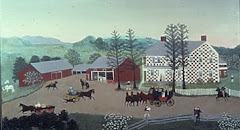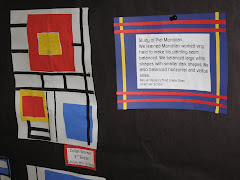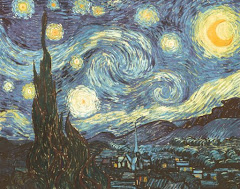At 72, Dennis Heiner was ineffectual in his interpretation, which led to his action of smearing white paint across Ofili’s work. They say, “Knowledge is power”. Ignorance is not “bliss” but a power that can destroy, not build up a community. Ofili’s background is African and Catholic so a blend of culture and faith is what his art piece projects. No one seemed to bother to ask though until after the fact. Sad.
The Crocker Museum was great (again). As a teacher of young children the Crocker visit again brought home the fact that real experiences are far more meaningful and firmly connects other learning experiences together. These links make strong connections in the brain, which I believe and have learned from my other Human Development courses, prevent them from being “pruned” later in life.
As an adult learner this real experience is similarly valuable. A recent PBS special shared that memory retention is best kept when older Americans learn something entirely new to them.
Quote:
"Individuals who lead mentally stimulating lives, through education, occupation and leisure activities, have reduced risk of developing Alzheimer's symptoms. Studies suggest that they have 35-40% less risk of manifesting the disease"- Dr. Yaakov Stern, Division Leader of the Cognitive Neuroscience Division of the Sergievsky Center at the College of Physicians and Surgeons of Columbia University, New York.
http://ezinearticles.com/?7-Quotes-From-Neuroscientists-That-Will-Revolutionize-Brain-And-Mind-Health,-Fitness-And-Wellness&id=714987
This blog along with the photos, video and quotes etc. are meant to support the writing in each section. It is an attempt to weave information together feeding the viewer from a well balanced "pallette". I hope you enjoy experiencing this as much as I did putting this together!!
Also, as I watched the potter "center the clay" and speak about the process, I connected some parallel lessons about life as well. Before centering the clay she prepared it.
Once this was done she firmly threw down the prepared clay onto the wheel, which anchored it to the wheel.
With some explanations and demonstrations she deftly began to make her object. The first phrase while centering the clay that caught my ear was “Hold onto your left hand with your right creating a triangle of strength.” And “Pushing the clay up and down the clay has nowhere else to go.”
In life we are prepared by the choices we make, the experiences we have, the company we keep and the efforts we make. These all allow us to become centered only as we allow ourselves to be “pushed up and down” (stretched and compressed) until the path is clear and there is no other place to go.
Jeremiah 18:3-4
3-So I went down to the potter’s house, and I saw him working at the wheel.
4- But the pot he was shaping from clay was marred in his hands;
This class has allowed me to be like clay in the potter's hand. I have been exposed to the many facets of the art world which has broadened my view of the world. I look at art much differently now and am willing to dig deeper into the "back story" of the artist, the process and my very self as I view and experience a piece of their world.





























